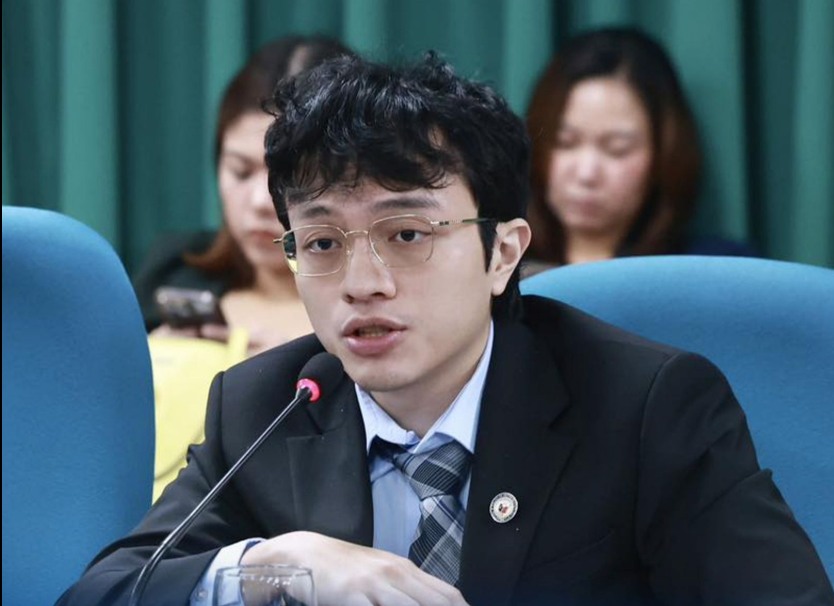📷: Department of Agriculture | FB
This P20 per kilo rice is a desperate election gimmick that “redeems” the promise of Ferdinand Marcos Jr. to reduce the staple’s price to P20, which defies market realities since the farmgate price of palay is stagnant at P18.40 per kilo. Given the recovery rate at 50% for the unhusked palay, the minimum price for a kilo of milled rice is P36.80. By selling the grain at P20 per kilo, the seller would theoretically lose at least P16.80 per kilo.
Since the Department of Agriculture (DA) announced the “dumping of the cheap rice stocks” in the Visayas, the question now is from where did the DA source the stocks? The logical source is the National Food Authority (NFA), which, under the Rice Liberalization Law (RLL), is mandated to maintain buffer stocks, which used to be pegged at 30-days inventory reserve but will now be reduced to 15-days inventory. Or the state could have cut a deal with rice importers who still have stocks coming even as farmers are harvesting palay, or Pakistan may have brought in shiploads of the grain in aid of election and not merely to nourish starving citizens.
RLL barred NFA from importing rice or keeping enough stocks to distribute once prices shoot up. The only time the NFA can distribute rice stocks is during emergencies, or when the government declares a food security crisis, which it did. The trouble with this is that the crisis is chronic and it worsened after the Duterte regime mindlessly enacted the RLL with the Villar group as the rah-rah chorale. The law allowed NFA to keep rice stocks until the staple deteriorates. This is now happening after Sen. Cynthia Villar and her cohorts prevented NFA from exercising its role as market intervenor through the RLL. With rice importers controlling the supply side, there will be no chance for NFA to influence prices. In short, RLL chokes the NFA while it strangles millions of rice farmers.
However, this P20 per kilo rice is so dirt cheap that industry players suspect government must have ordered all NFA warehouses to strip themselves of their inventory, ship them to the Visayas and sell them to consumers, with each buyer limited to only 10 kilos. Rice mills must now be so busy they could no longer mill palay, or they are occupied with re-milling old rice stocks to make them look new after being kept in storage for a year or even longer. Rice millers will tell you that the eating quality of rice deteriorates beyond six months. So, the option is to re-mill or bombard the stocks with some flavors. The sudden announcement that the republic had found out the stocks of the rare P20/kilo rice less than three weeks before the May 12, 2025 elections should compel the Commission on Elections (Comelec) to ask the DA, out of the goodness of its heart, why it is engaged in an activity that is meant to win votes?
For Danilo Ramos, chairperson of the Kilusang Magbubukid ng Pilipinas (KMP) and a Makabayan Coalition senatorial candidate, and Cathy Estavillo or Bantay Bigas and the women farmers’ group Amihan, the P20-per kilo rice is a desperate distraction. “The Marcos Jr. administration’s ‘budol revival’ of P20-per-kilo rice is not an act of relief, but a desperate ploy to salvage crumbling public trust. It is a thinly-veiled electoral gimmick, aimed at deflecting criticism and pacifying growing unrest and discontent from the public and among Duterte loyalists, especially in the Visayas where the roll-out will first take place,” Ramos and Estavillo revealed. It is nothing but a cheap publicity stunt as the country reels from the devastating impacts of RLL, which institutionalized inequity in the rice industry and legitimized the operations of rice smugglers, and made it impossible for rice farmers to compete against cheap, subsidized foreign rice. RLL, they argued, led to more expensive rice, deeper food insecurity, heavy dependence on imports, and the further misery to millions of rice farmers.
KMP research showed that after RLL’s passage in 2019, rice prices skyrocketed. Before RLL was enacted, the average retail price of rice was only P37.40 per kilo. The average price soared to P40.90 in succeeding years. The palay farm gate prices have not gone a tad higher than P18.40 a kilo, further reducing the income of farmers already struggling with high production costs. The rice price index has soared from its 2018 baseline of 100 to 117.1 in 2024, reflecting how much heavier the burden has become for the average Filipino household. “Despite importing a record 4.78 million metric tons (MMT) of rice in 2024—more than double the 2018 levels—these imports have only enriched a handful of large traders or the rice cartel. From 217 rice importers in 2019, the number of importers has dropped to just 154 in 2024, even as their control over the market ballooned. This consolidation has squeezed out smaller players while giving the rice cartel even greater power over pricing and supply,” Ramos and Estavillo explained.
In 2023, the average net income per hectare fell to Php27,085—the lowest in nearly two decades. Women farmers, who often face more layers of discrimination and lack of access to support services, have borne the brunt of this collapse. The promise of modernization and food security under the RLL has proven to be a myth. “Marcos Jr.’s Php20 rice promise is nothing more than a political smokescreen. It is meant to buy goodwill in a region where anger over broken promises and failed policies continues to grow. But no PR campaign or gimmickry can hide the truth: The rice crisis is a direct result of government policies that prioritize imports over local production, and the interests of business over the welfare of the people,” Ramos concluded.
“We, the KMP and the Amihan National Federation of Peasant Women, stand firm in our call to reject this deception. The Filipino people deserve genuine reforms—not theatrical stunts from a government and President who has no genuine compassion for Filipinos. RLL must be repealed. Government resources must be redirected toward revitalizing local production through genuine land reform, rural development, and food sovereignty. Until then, every ‘cheap rice’ announcement will remain what it truly is: an insult to the dignity and survival of Filipino farmers and consumers alike,” KMP and Amihan argued. (DIEGO MORRA)




